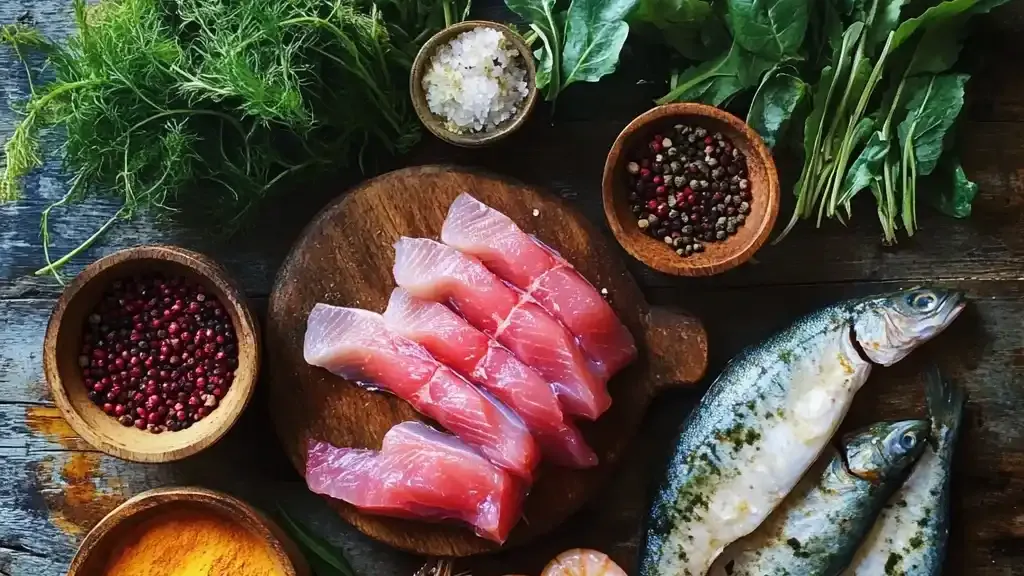If you want your fish to live a long and healthy life, providing them with the right food is key. While store-bought options are convenient, homemade fish food recipes can be better for your fish. They are fresh, cost-effective, and allow you to control exactly what goes into your fish’s diet.
Table of contents
- Why Make Your Own Fish Food?
- Understanding What Fish Need in Their Diet
- Ingredients for Fish Food Recipes
- Step-by-Step: How to Make Fish Food
- Adjusting Recipes for Different Fish
- Mistakes to Avoid When Making Fish Food
- FAQs About Fish Food Recipes
- 1. What are the best ingredients for homemade fish food?
- 2. Can homemade fish food be fed to all types of fish?
- 3. How long can I store homemade fish food?
- 4. Is garlic safe to use in fish food?
- 5. How often should I feed my fish homemade food?
- 6. Do I need any special equipment to make fish food?
- Why Answering FAQs is Important
- Why Homemade Fish Food is Worth It
- Conclusion
Why Make Your Own Fish Food?
When it comes to feeding your fish, making your own food has many advantages. Store-bought fish food is convenient, but it may not always provide the nutrients your fish need to thrive. Homemade fish food recipes give you complete control over what goes into their diet, which helps improve their health.
Benefits of Homemade Fish Food
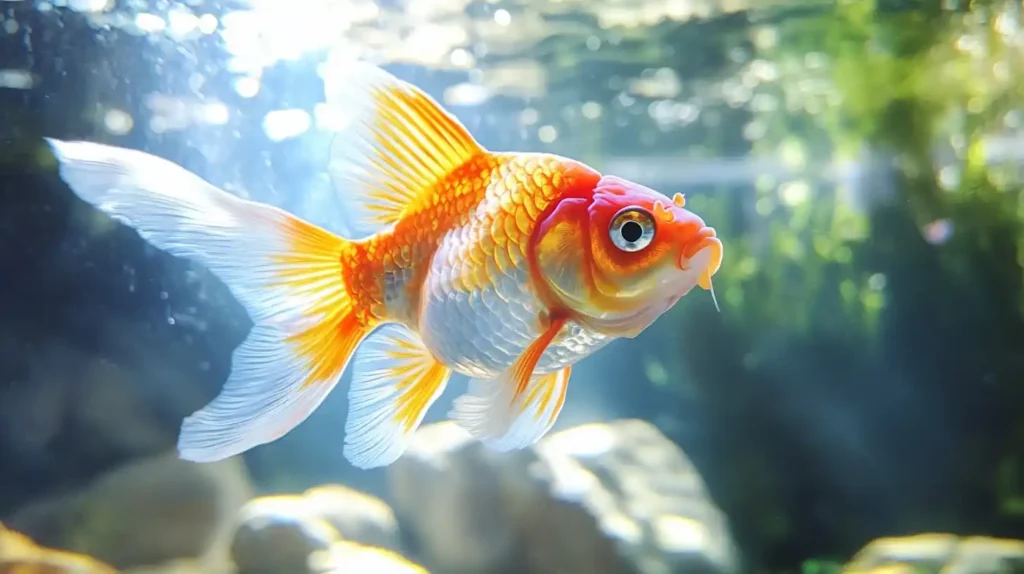
Here are some reasons why making fish food at home is a smart choice:
- Save Money
Buying fresh ingredients and making fish food in bulk is cheaper than purchasing processed fish food regularly. For example, a single batch of homemade food can last for weeks, which saves you money in the long run. - Control the Ingredients
Homemade recipes let you choose high-quality ingredients. You can avoid harmful fillers and preservatives that may be present in store-bought fish food.Creating fresh recipes from scratch gives you complete control over nutrients, similar to how simple comfort dishes can be personalized to your taste.https://myepicrecipes.com/cream-of-jalapeno-soup-a-simple-and-spicy-comfort-dish/ - Healthier Fish
Fresh food improves fish health by boosting their energy and enhancing their colors. Additionally, a nutrient-rich diet helps prevent diseases and strengthens their immune systems.
Why Choose Homemade Instead of Store-Bought?
Store-bought fish food often lacks variety. Fish in the wild eat different types of food, such as algae, small crustaceans, and plants. By making your own food, you can mimic their natural diet, giving them everything they need to stay healthy and vibrant.can help you create meals that support your fish’s immune system and vitality.
Understanding What Fish Need in Their Diet
Fish, like all animals, need the right nutrients to stay healthy and active. However, their nutritional needs can vary depending on their species. Some fish eat mostly plants, while others prefer meat or a mix of both. To create a balanced diet for your fish, it’s important to know what they need.
The Key Nutrients Fish Need
Here’s a simple breakdown of the most important nutrients your fish require:
- Proteins
Proteins are essential for growth and energy. They come from sources like:- Fish fillets.
- Shrimp or seafood.
- Lean meats like trimmed beef heart.
- Vitamins and Minerals
Just like humans, fish need vitamins and minerals to stay healthy. For example:- Vegetables like romaine lettuce or spinach provide essential vitamins.
- Supplements, like vitamin C tablets, support their immune system.
- Fats
Essential fats keep fish energetic and help them absorb nutrients. Seafood and egg yolks are good sources.
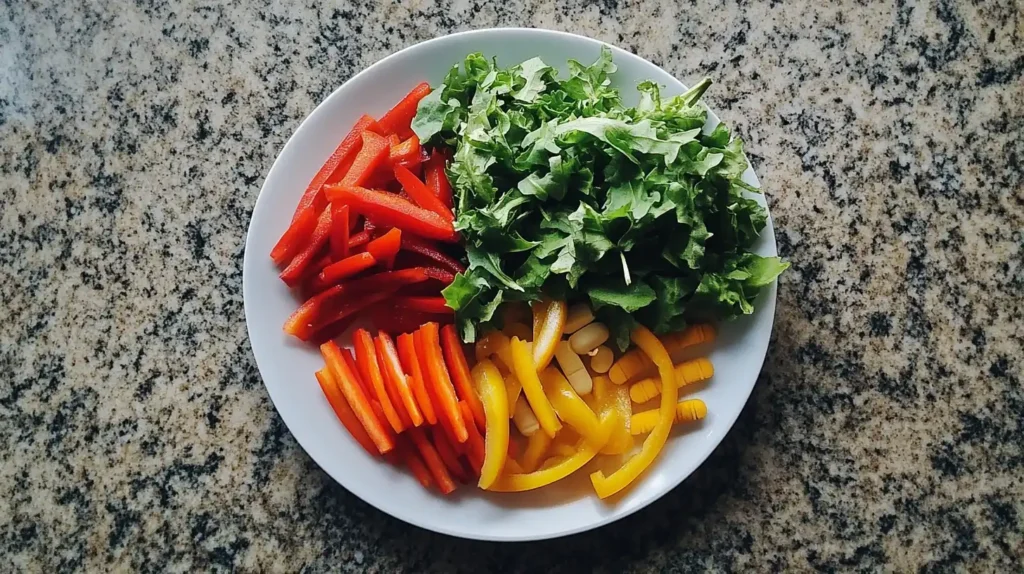
Different Diets for Different Fish
To meet your fish’s needs, you must consider their diet type:
- Herbivorous Fish: These fish mainly eat plants. Include plenty of leafy greens and vegetables in their food.
- Carnivorous Fish: These fish need a lot of protein. Add more animal-based ingredients to their diet.
- Omnivorous Fish: Omnivores eat both plants and proteins, so aim for a balanced mix of both.
Why Nutrition Matters
Without the right food, fish may become sluggish, lose their vibrant colors, or even fall ill. Providing a diet rich in nutrients mimics what they would eat in the wild, which helps them thrive in your aquarium.
Ingredients for Fish Food Recipes
Creating a balanced fish food recipe starts with choosing the right ingredients. Using fresh, high-quality components ensures your fish get the nutrients they need to stay healthy, grow properly, and display vibrant colors.
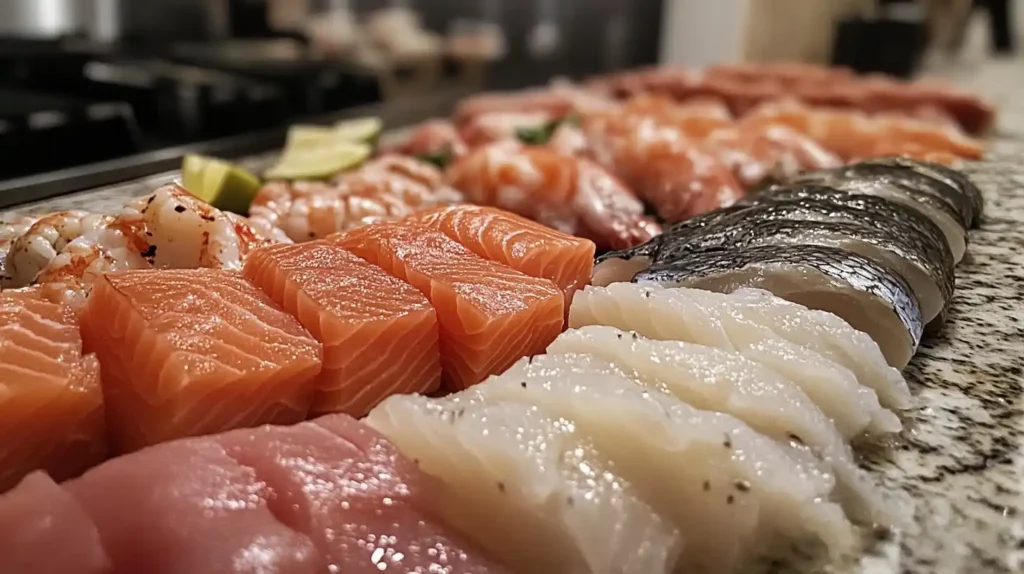
Animal-Based Ingredients
Fish need protein to grow strong and stay active. Here are the best animal-based options:
- Fish Fillets: Use fresh, lean fillets like salmon, cod, or tilapia. These are packed with protein and easy for fish to digest.
- Shrimp or Seafood: Small shrimp or other seafood provide essential fats and nutrients. Dried shrimp can also be ground for use.
- Beef Heart: For carnivorous fish, trimmed beef heart is an excellent source of protein. Remove all fat and gristle before use.
Vegetable-Based Ingredients
Vegetables supply fish with vitamins and minerals essential for energy and immunity. Some good options include:
- Leafy Greens: Romaine lettuce or spinach are rich in vitamins and easy to process into food.
- Bell Peppers: These contain carotenoids, which enhance fish coloration naturally.
- Avoid Starchy Veggies: Stay away from potatoes, corn, or carrots, as fish don’t digest starches well.
Dry Ingredients for Added Nutrition
Dry ingredients absorb moisture, improve the texture of your recipe, and add nutrients:
- Dried Seaweed: Ground seaweed provides iodine and other minerals.
- Paprika: A great source of carotenoids to boost color.
- Vitamin Tablets: Grind a multivitamin and a vitamin C tablet to enrich your fish food.
Binding Agents
To keep the food from falling apart in water, you’ll need a binder. Common options include:
- Gelatin: Soak it in water, heat it, and mix it with the ingredients for a firm texture.
- Agar: A plant-based alternative to gelatin that also holds food together.
- Egg Yolks: These are not only great binders but also provide extra nutrients.
Ingredient Ratios
The proportion of ingredients depends on your fish’s diet type:
- Herbivorous Fish: Use 60–70% vegetables and 30–40% protein.
- Carnivorous Fish: Go for 75% protein and 25% vegetables.
- Omnivorous Fish: Balance the mix evenly with 50% of each.
Step-by-Step: How to Make Fish Food
Making fish food recipes at home is simple and cost-effective. By following these steps, you can create a nutritious and balanced diet tailored to your fish’s needs.
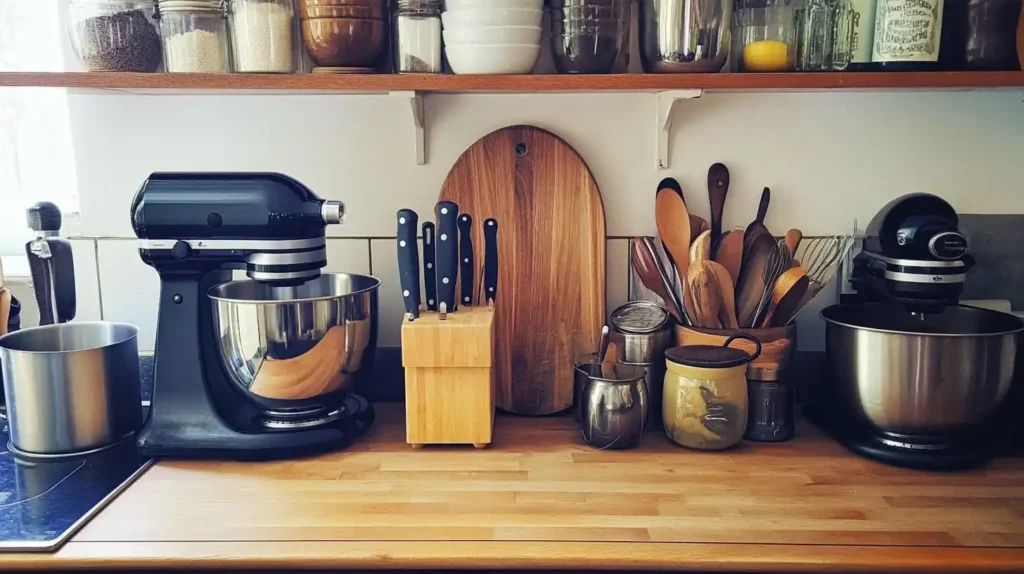
Step 1: Prepare the Ingredients
Start by gathering and preparing your ingredients:
- Proteins:
- Chop fish fillets, shrimp, or lean beef heart into small pieces.
- Ensure all fat or gristle is removed.
- Vegetables:
- Wash leafy greens like spinach or romaine lettuce.
- Chop bell peppers and remove seeds.
- Dry Additions:
- Grind dried seaweed, shrimp, or paprika into a fine powder.
- Crush multivitamin and vitamin C tablets for added nutrition.
Step 2: Blend the Ingredients
Once everything is ready:
- Place all wet ingredients, such as fish and vegetables, into a food processor.
- Blend until the mixture is smooth but not overly watery.
- Add the dry ingredients, including ground vitamins and seaweed, and blend again.
Step 3: Add a Binder
To ensure the food stays firm in water, you’ll need a binding agent:
- Gelatin: Soak it in water for a few minutes, then heat until fully dissolved. Let it cool slightly before mixing.
- Agar: Mix agar powder directly with the ingredients before blending.
- Egg Yolks: Separate yolks from the whites, and add them to the mixture.
Step 4: Cook the Mixture
Cooking helps the food set and ensures it is safe for your fish:
- Line a baking tray with parchment paper.
- Spread the mixture evenly into a thin layer.
- Bake at 200°F for 20 minutes. This will help the food firm up.
Step 5: Cool, Cut, and Store
After cooking:
- Let the mixture cool completely in the refrigerator.
- Cut it into small squares or strips that are easy to handle.
- Store the pieces in individual bags and freeze them. Frozen food can last up to six months.
Quick Tips for Success
- Always let the gelatin cool slightly before mixing, or it may break down other ingredients.
- Avoid overcooking; this can reduce the nutrients in the food.
- Use a sharp knife or kitchen scissors to cut even portions for freezing.
Adjusting Recipes for Different Fish
Not all fish have the same dietary needs. Some thrive on plant-based food, while others require more protein. Adjusting your fish food recipe based on your fish’s diet type is essential for their health and happiness.
For Herbivorous Fish
Herbivorous fish primarily feed on plants in the wild. They require a diet rich in vegetables, which provide the vitamins and minerals they need.
- Vegetable Proportion: Use 60–70% vegetables, like spinach, romaine lettuce, or bell peppers.
- Protein Proportion: Keep proteins like shrimp or fish fillets to 30–40%.
- Best Additions: Include dried seaweed and ground vitamins for added nutrients.
For Carnivorous Fish
Carnivorous fish need a protein-rich diet to mimic their natural consumption of small animals and insects.
- Protein Proportion: Use 75% animal-based ingredients like fish fillets, shrimp, or lean beef heart.
- Vegetable Proportion: Add only 25% vegetables, such as leafy greens.
- Best Additions: Add egg yolks and dried shrimp for essential fats and protein.
For Omnivorous Fish
Omnivores eat both plants and animals, making a balanced diet essential for their health.
- Equal Ratios: Use 50% animal-based ingredients and 50% vegetables.
- Flexible Recipes: Omnivorous fish can thrive on a variety of ingredients, so you can easily adjust based on what you have available.
- Best Additions: Multivitamins and carotenoid-rich vegetables like bell peppers enhance their overall health.
Why Adjusting Recipes Matters
Feeding your fish according to their dietary needs ensures they get the nutrients they require. Herbivores may struggle to digest high-protein food, while carnivores won’t thrive on a plant-heavy diet. Providing a balanced diet improves their energy levels, boosts their immune system, and keeps their colors vibrant.
Example Adjustments for Popular Fish Types
- Goldfish (Herbivores): Focus on vegetables like spinach and romaine lettuce.
- Betta Fish (Carnivores): Increase protein by using shrimp and fish fillets.
- Guppies (Omnivores): Maintain a balance of leafy greens and lean protein.
Mistakes to Avoid When Making Fish Food
Even though making fish food recipes at home is straightforward, there are common mistakes that can lead to problems for both your fish and your tank. Avoiding these errors will ensure your fish food is both nutritious and safe.
Mistake 1: Using Too Much Starchy Vegetables
Fish cannot digest starches like potatoes, corn, or carrots very well. Including too much of these can cause:
- Digestive issues in your fish.
- Water contamination as the starches break down.
What to Do Instead: Use leafy greens, like spinach or lettuce, and bell peppers for better nutrition.
Mistake 2: Skipping the Binder
If you forget to include a binder, the fish food may break apart in the water. This can:
- Cloud the water and make it harder to clean.
- Waste food, as your fish may not eat all the floating pieces.
What to Do Instead: Always use gelatin, agar, or egg yolks to hold the mixture together.
Mistake 3: Improper Storage
Storing fish food incorrectly can cause it to spoil, which may harm your fish. Common storage mistakes include:
- Leaving the food at room temperature for too long.
- Not sealing portions properly, which can lead to freezer burn.
What to Do Instead: Cut the food into small portions, place them in airtight bags, and freeze them immediately. Properly stored food can last up to six months.
Mistake 4: Overcooking the Ingredients
Cooking ingredients at high temperatures or for too long can:
- Destroy essential nutrients.
- Make the food less appealing to fish.
What to Do Instead: Bake the mixture at 200°F for 20 minutes, just enough to firm it up without losing nutrients.
Mistake 5: Overlooking the Fish’s Dietary Needs
Feeding your fish the wrong type of food can:
- Cause health problems, like digestive issues or weight loss.
- Lead to poor energy levels or dull colors.
What to Do Instead: Adjust the recipe for your fish’s specific diet. For example:
- Herbivorous fish need more vegetables.
- Carnivorous fish thrive on protein-rich food.
- Omnivorous fish require a balance of both.
Why Avoiding Mistakes is Important
Every small mistake can add up and affect your fish’s health or the cleanliness of your tank. By following these tips, you can make fish food that is not only nutritious but also easy to store and use.
FAQs About Fish Food Recipes
When it comes to homemade fish food recipes, people often have questions about ingredients, storage, and feeding. Here are the most frequently asked questions and their answers to help you make the best decisions for your fish.
1. What are the best ingredients for homemade fish food?
The best ingredients depend on the type of fish you have. However, a mix of the following works well for most fish:
- Proteins: Fish fillets, shrimp, or lean meats like beef heart.
- Vegetables: Spinach, romaine lettuce, and bell peppers.
- Dry Additions: Dried seaweed, ground shrimp, or paprika.
These ingredients provide the essential nutrients, vitamins, and minerals fish need to thrive.
2. Can homemade fish food be fed to all types of fish?
Yes, but you need to adjust the recipe based on their diet type:
- Herbivores need more vegetables.
- Carnivores require higher protein levels.
- Omnivores need a balanced mix of both.
By customizing the recipe, you can meet the specific needs of each type of fish.
3. How long can I store homemade fish food?
Homemade fish food can last up to six months if stored correctly. Follow these tips:
- Freeze the food in small portions to avoid waste.
- Use airtight containers or bags to prevent freezer burn.
- Thaw only what you need for one feeding to keep the rest fresh.
4. Is garlic safe to use in fish food?
Yes, garlic is safe in small amounts and can even benefit your fish. It helps:
- Boost the immune system.
- Improve digestion.
- Enhance the flavor, making the food more appealing to picky eaters.
5. How often should I feed my fish homemade food?
The frequency of feeding depends on the species and size of your fish:
- Most fish need to be fed 1–2 times a day.
- Feed only as much as your fish can eat in 2–3 minutes to avoid overfeeding and water pollution.
6. Do I need any special equipment to make fish food?
No, you likely have most of what you need in your kitchen. Common tools include:
- A food processor or blender for mixing.
- A baking tray and parchment paper for cooking.
- Measuring cups and a knife for preparing ingredients.
Why Answering FAQs is Important
Answering these common questions helps fish owners feel confident about making and using homemade fish food. When you know the right techniques and ingredients, feeding your fish becomes simple and stress-free.
Why Homemade Fish Food is Worth It
Making your own fish food is a great way to ensure your pets stay happy and healthy. By using fresh ingredients and following these steps, you can provide the best diet for your fish. Would you like to explore the benefits of homemade fish food further? Start today, and see the difference it makes!
Conclusion
Making homemade fish food recipes is a simple yet highly effective way to care for your aquatic pets. By choosing fresh, high-quality ingredients, you can provide a balanced diet tailored to your fish’s needs. This not only improves their health and longevity but also enhances their natural colors and energy levels.
In addition to the nutritional benefits, making fish food at home allows you to save money and reduce your reliance on processed options. Whether you’re feeding herbivorous, carnivorous, or omnivorous fish, these recipes can be easily adjusted to suit their specific requirements.
Finally, the satisfaction of creating something that directly benefits your pets is deeply rewarding. By following the steps and tips shared in this guide, you’ll not only be helping your fish thrive but also enjoying the peace of mind that comes with knowing exactly what they’re eating. Why wait? Start experimenting with your first recipe today and see the positive impact it has on your fish and your aquarium!

